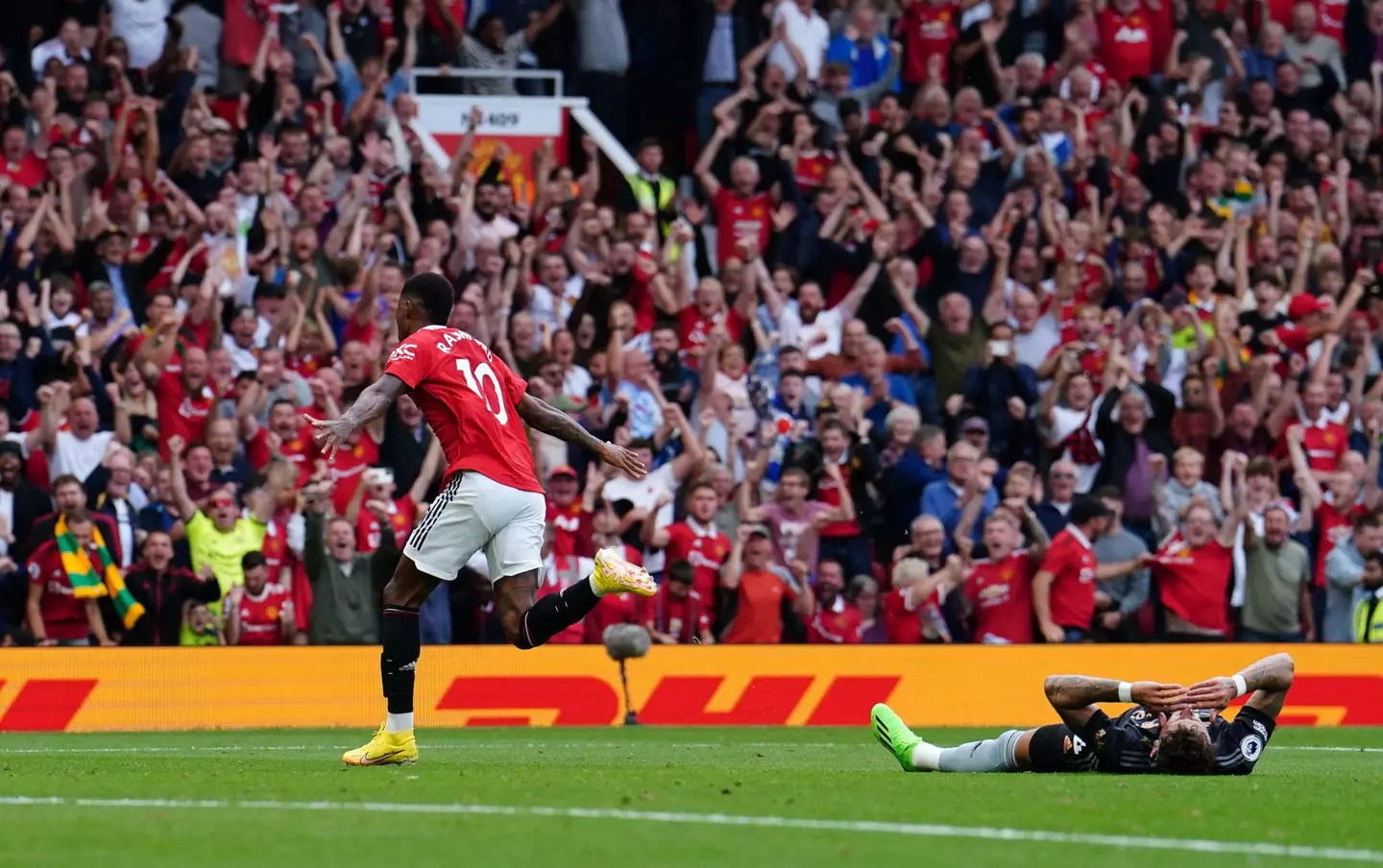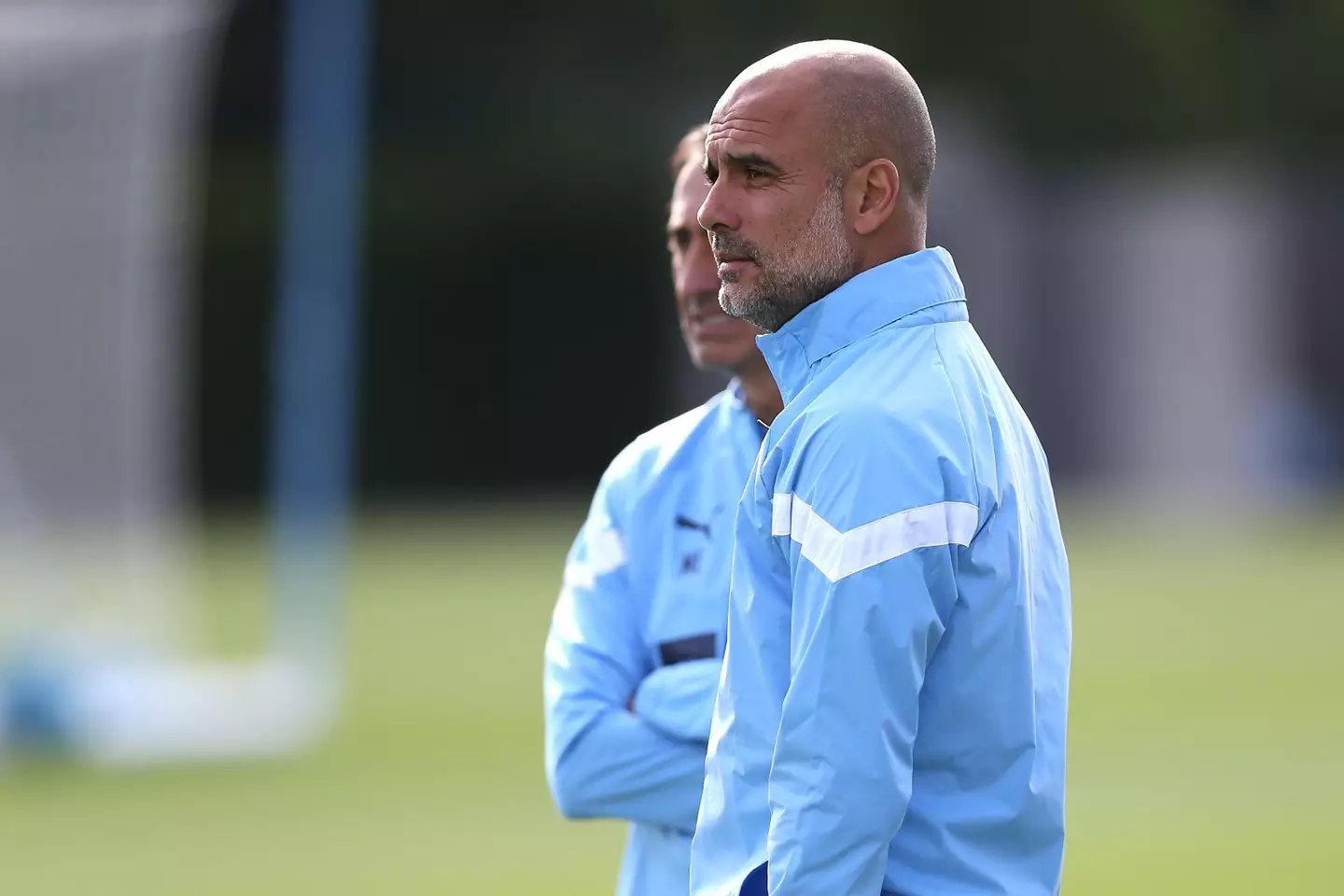
Seven matches into Erik Ten Hag’s Manchester United reign, the Dutchman’s principles of play are becoming clear.
Having worked closely with Pep Guardiola at Bayern Munich, it is no surprise to see certain similarities in their respective styles: Ten Hag’s teams are known to employ a counter-pressing strategy on possession loss and famed for their skill in possession of the football. Yet the methods and structures utilised by both managers in possession create a fascinating division between controlling games and penetrating defences, principally through the contrasting roles of wingers.
While Guardiola has favoured touchline wingers at Manchester City, one of Ten Hag’s key principles is the concept of ‘minimum width’. This arises from a difference in core philosophy: Guardiola believes that maximising the width covered when in possession forces the defence to spread out, thereby opening gaps centrally. In other words, Guardiola places emphasis on stretching teams horizontally. Typically this is achieved by having both wingers on the touchlines - potentially isolating the far side winger from the play.
Advert
By contrast, Ten Hag’s philosophy avoids disconnecting one winger in favour of a narrower setup: his wingers typically play just wider than wherever their opposing fullback is positioned. This keeps the wingers involved in the play and allows greater ability to combine with midfield players - a great strength of Jadon Sancho in particular.
This in turn means more players are positioned centrally, importantly allowing a greater penalty area presence since players are well-positioned to make runs. Moreover, Manchester United consequently have players positioned in the most probable areas for second balls to drop, meaning that a counterpress can be quickly and effectively initiated on loss of possession or when a cross is cleared.
Advert
Whereas Guardiola aims to stretch opposition teams horizontally, Ten Hag’s minimum width principle requires strong vertical spacing in order to be effective: due to the congestion arising from having so many players positioned centrally, vertical spacing is vital to create diagonal passing options through the lines.
In order to achieve this, the Red Devils must be actively able to stretch teams vertically - most prominently through a striker able and willing to run in behind to force the defensive line deeper. This is one reason behind Ten Hag’s continued selection of Marcus Rashford in the central striking role ahead of Cristiano Ronaldo in the absence of Anthony Martial.

When the Old Trafford outfit are able to stretch opposing teams vertically, the minimum width principle lends itself well to incisive diagonal passing combinations to cut through teams at speed. Because so many Manchester United players are positioned within the opponent’s defensive block structure, many defending players can be forced into decisions by individual actions, thus the likelihood of unbalancing the defence increases.
Advert
Therein lies the strength of verticality in football: fast, piercing attacks can result, with defending teams thrown into chaos. Subsequent phases where blocks and clearances are recovered by United’s counter-press further augment the team’s ability to penetrate and create chances.
However, when unable to do so, players are unable to find space between the lines to receive passes, resulting in a frustrating slow tempo display of passing between the centre-backs, unable to penetrate the first line of the opposition’s block. When the ball does go forward, the lack of space available to midfield players and forwards almost invariably results in possession loss, making controlling games impossible.
One way to avoid this issue of failing to control games is Guardiola’s style: touchline wingers. By utilising the entire width of the pitch, the wingers present an easy outlet, making retaining possession easier. In effect, this allows for the creation of a ‘bowl’ shape around the opposing defence such that the ball can be more easily circulated horizontally and retained. In other words, controlling games becomes simpler.

Advert
Compared with Ten Hag’s approach, because Guardiola’s teams maximise width, the tempo of their attacks tends to be lower, requiring more passes (over a larger distance) and pre-rehearsed, deliberate rotations in order to find gaps to penetrate and break through teams. Thus it can be seen that the former Barcelona boss’s style prioritises controlling games through retaining possession, whereas Ten Hag places greater importance on cutting through teams at pace to score goals after quickfire moves.
Clearly, in order to excel in a framework where space is limited by design, a certain profile of player is demanded, particularly in midfield. Midfield players must have exceptional technical security in order to survive in the tight situations they will commonly be placed in, whilst consistency in weight and accuracy of passing is also essential - no surprise therefore that Fred has struggled to assert himself in midfield.
Ten Hag’s summer-long pursuit of the excellent Frenkie de Jong further demonstrates this: the latter has the spatial awareness, technical security and mobility required to thrive under the former. In Christian Eriksen, Manchester United have found a fantastic solution - the Dane is technically excellent with sound tactical understanding and has improved his mobility and durability over the summer.
Summer signing Casemiro, though, is yet to assert himself for the Red Devils. While there are a multitude of reasons for this - new league, new country, new teammates and so on, tactically, the framework under Erik Ten Hag is markedly different from that in which he has previously played. Whilst undoubtedly one of the best defensive midfield players in the world, his technical attributes cannot be said to be his strongest asset.
In this context, being expected to operate as a link between the defence and forward line in United’s build-up play is a significant challenge. Whereas at Real Madrid, Casemiro was used to having easily accessible outlets of his fullbacks being spread wide in possession, at United, Diogo Dalot often inverts with Tyrell Malacia also playing a more withdrawn central role.
Combined with the lack of width from the wingers, this means what was once the default outlet for the Brazilian is now no longer a viable option. Instead, quick, diagonal passing is demanded of him, to teammates he has still to fully understand.
Advert
To extract the best from the new midfielder, one solution is to vary the build-up structure so that he drops between the central defenders to create a 3-2-5. This would reduce the cognitive strain on Casemiro since rather than having to focus on movements all around him (360 degrees), the game would be largely played in front of him thus giving only 180 degrees to monitor.
However, this represents a big systematic shift in Ten Hag’s approach - ironically increasing the importance of the wide areas during the build-up phase in a manner similar to Guardiola - a luxury Casemiro is unlikely to be afforded when the team is functioning effectively without him in the side.
For now, the struggle to control possession is one that will continue to affect Manchester United, though the much-improved defensive work-rate coupled with genuine success in penetrating defences during spells of possession should enable the club to keep up their strong run.
When retaining possession for long periods appears challenging, it is important to consider the wishes of the manager as well as scrutinising the players.
Topics: Manchester United, Manchester City, Erik Ten Hag, Pep Guardiola, Marcus Rashford, Jadon Sancho